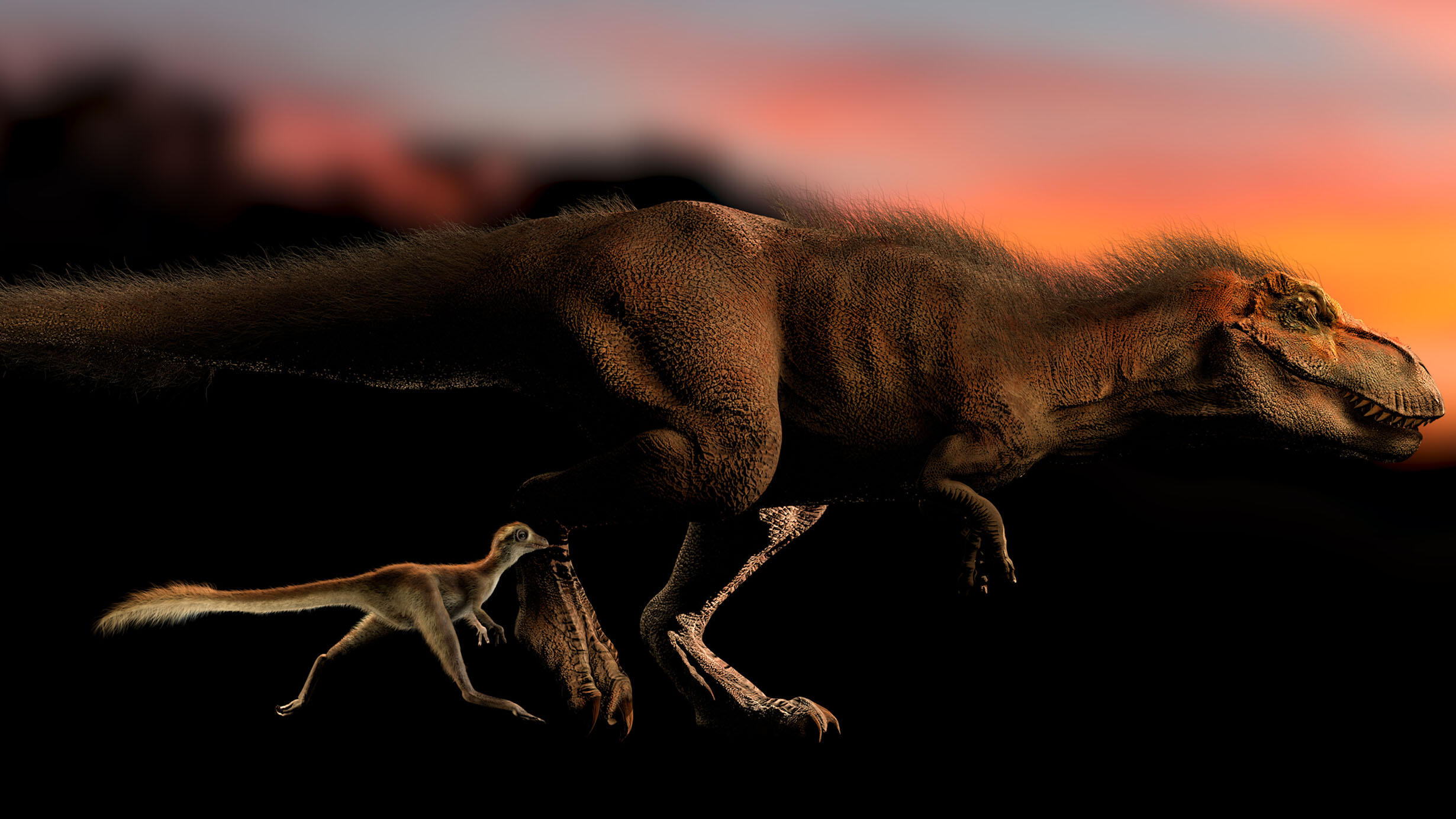 Fossils of tyrannosaurs ranging from ages 2 to 26 have been found together, as well as trackways with footprints from multiple individuals, suggesting that T. rex may have formed herds and even hunted together.
Fossils of tyrannosaurs ranging from ages 2 to 26 have been found together, as well as trackways with footprints from multiple individuals, suggesting that T. rex may have formed herds and even hunted together. Just as forensic investigators might examine a victim’s injuries at a crime scene, paleontologists look for bite and scratch marks on the fossilized skeletons of animals for evidence of attempted attacks.
One example is the case of a T. rex tooth found embedded deep in the tail bone of a duck-bill dinosaur. The duck-bill dinosaur managed to escape—and, in fact, lived long enough for new bone to grow around the puncture wound.
Still, the scar on its skeleton offers paleontologists some valuable insight. It’s evidence that T. rex wasn’t simply a scavenger: it actively hunted live prey, including sizable vertebrates like Edmontosaurus annectens, which could grow to be almost 10 feet tall and weigh up to 7,700 pounds.
Find out what coprolites, or fossilized digestive waste, reveal about the diet of T. rex.
Apex predators like T. rex can’t count on every hunt resulting in a meal, since the catch hinges on a number of factors, including type of prey and time of day. Lions, for example, succeed less than 20 percent of the time when they hunt on their own, but more than 30 percent when they hunt as part of a group.
How did T. rex prefer to hunt? Fossils from tyrannosaurs ranging from ages 2 to 26 have been found together, as have T. rex trackways with footprints from multiple individuals. That seems to support the idea that this species may have formed herds—and possibly even hunted together.
“T. rex as a ‘lone hunter’ may have been a myth,” says Gregory Erickson, professor of biology at Florida State University and consultant on the exhibition T. rex: The Ultimate Predator.
But group dynamics were more complicated than collaborative hunting. Fossil evidence also points to the possibility that some tyrannosaurs would eat almost anything, even members of their own species.
A 2010 study examined four T. rex specimens that bore tooth marks that could only have been made by another tyrannosaur. The “puncture and pull” direction of the marks were a close match to previous bites attributed to T. rex, and the location and types of wounds—repeated, to feet and arms suggested feeding, not fighting.
And unlike the lucky Edmontosaurus that got away, these T. rex specimens showed no signs of healing, suggesting that the bites were inflicted after the animals had already died.
A version of this story first appeared in the Spring issue of the Member Magazine, Rotunda.